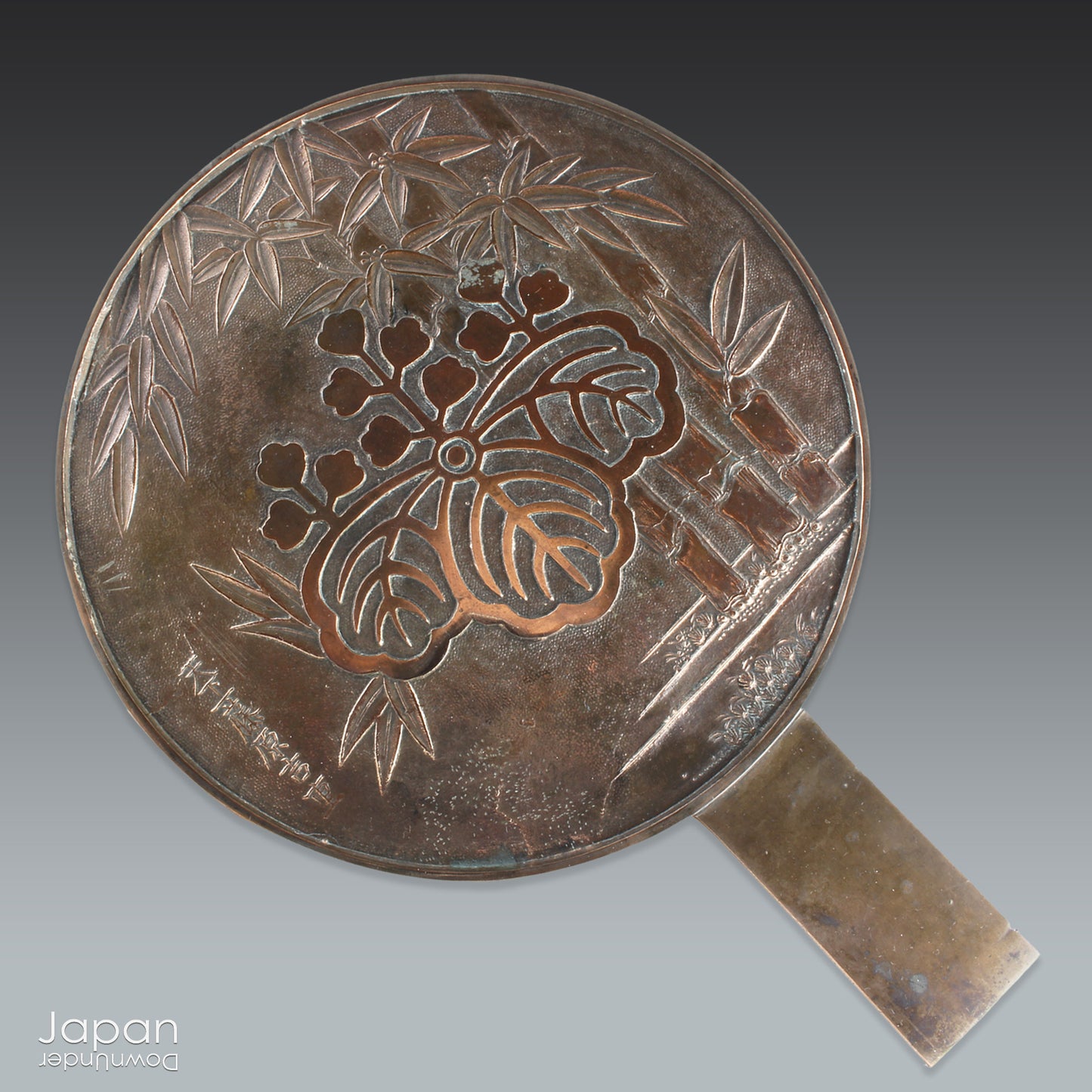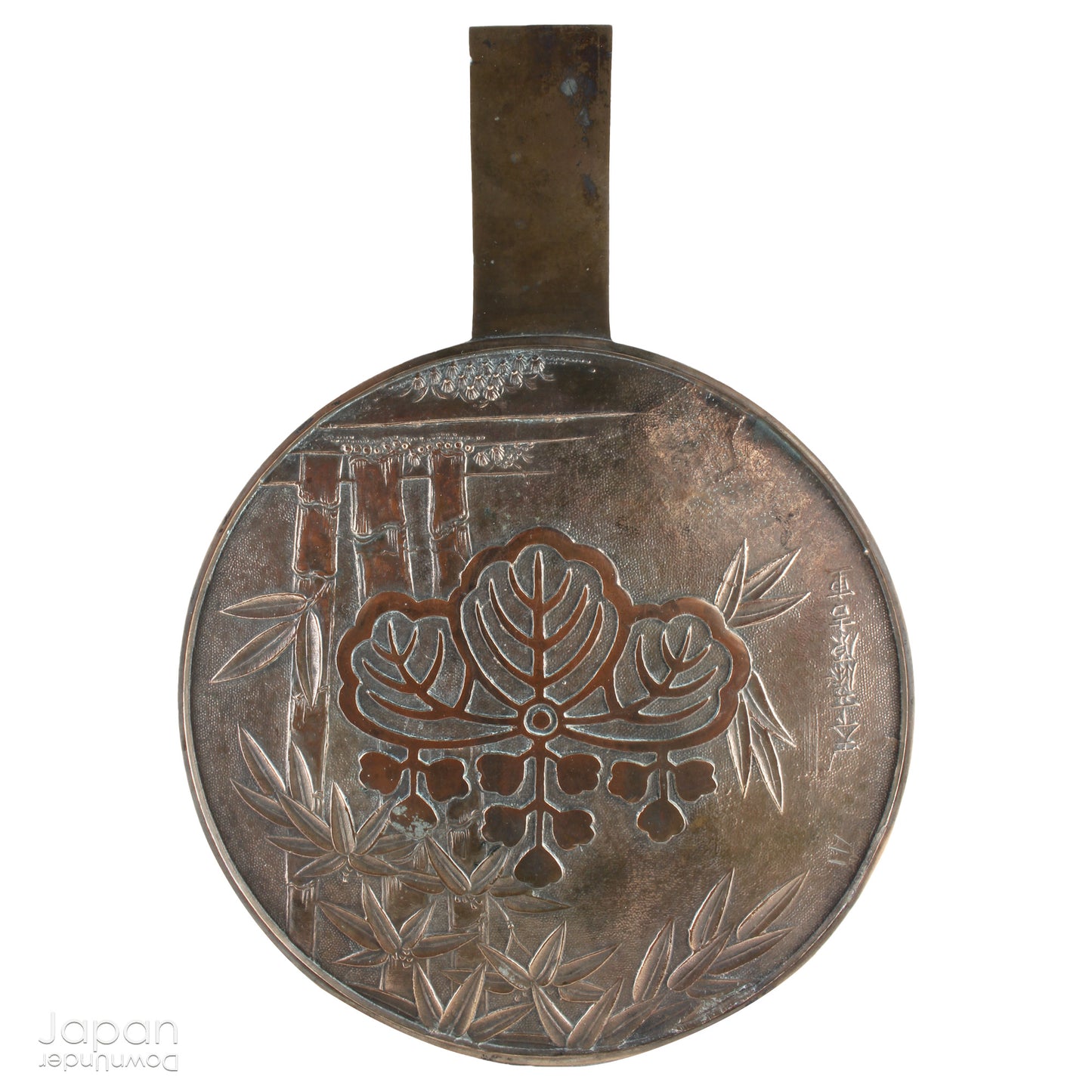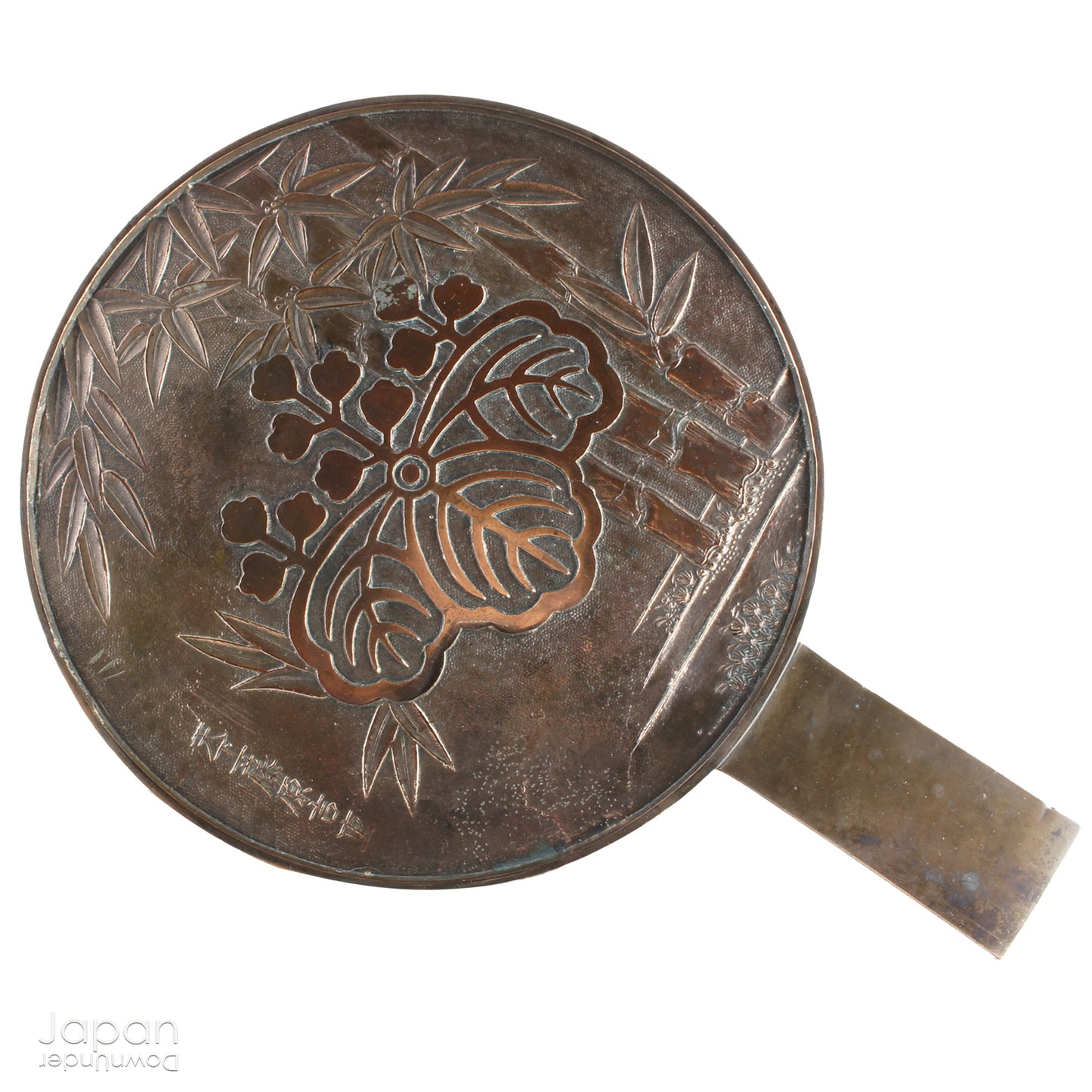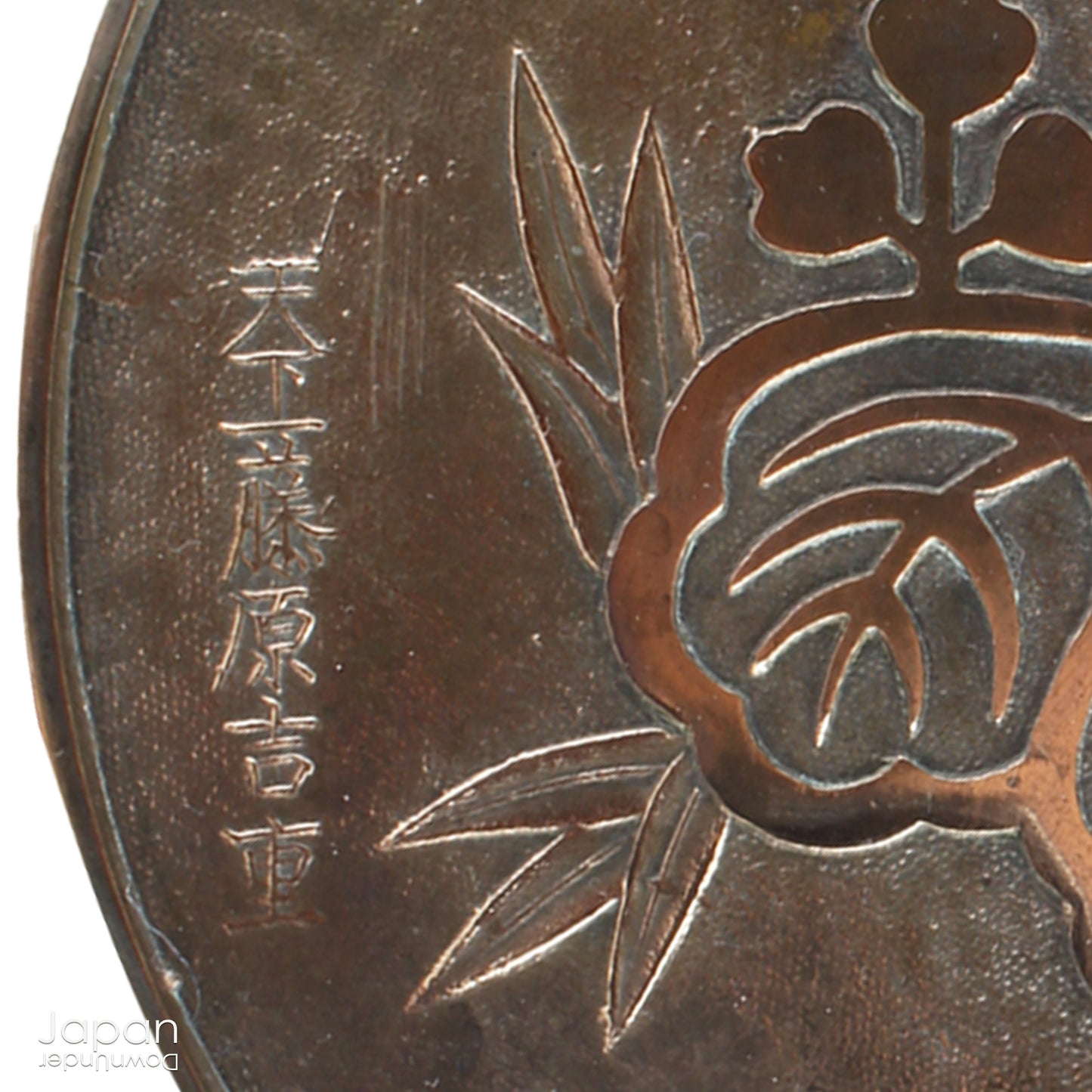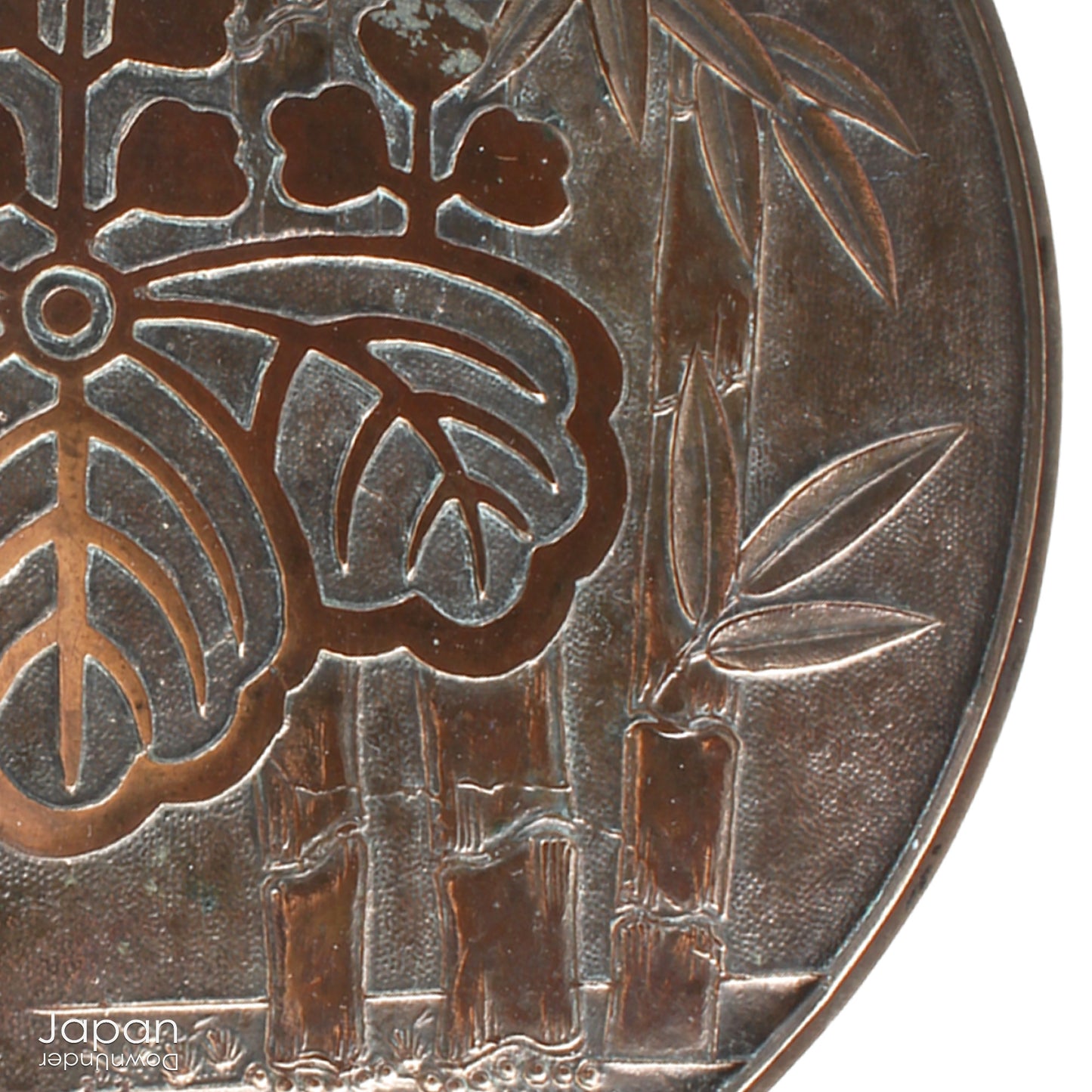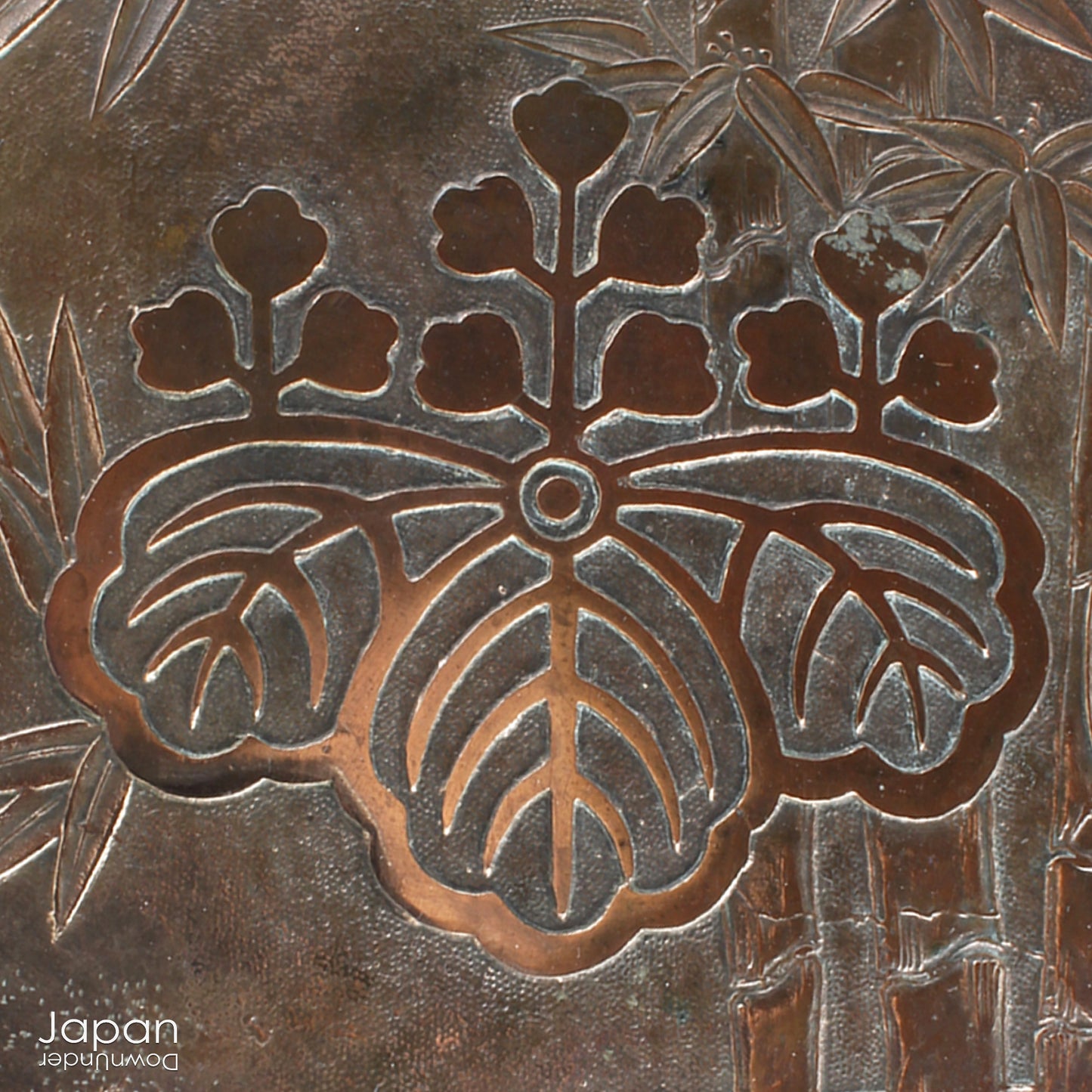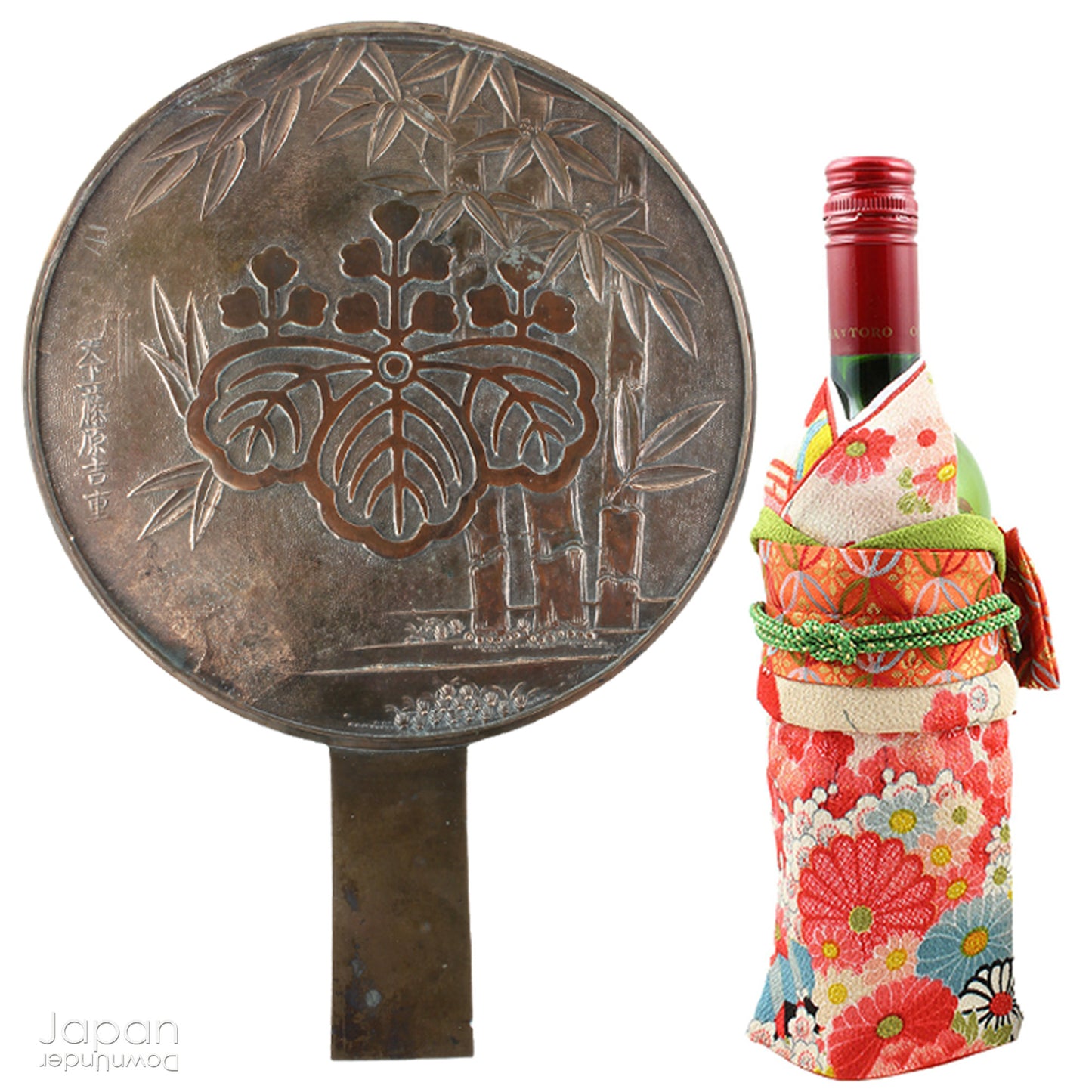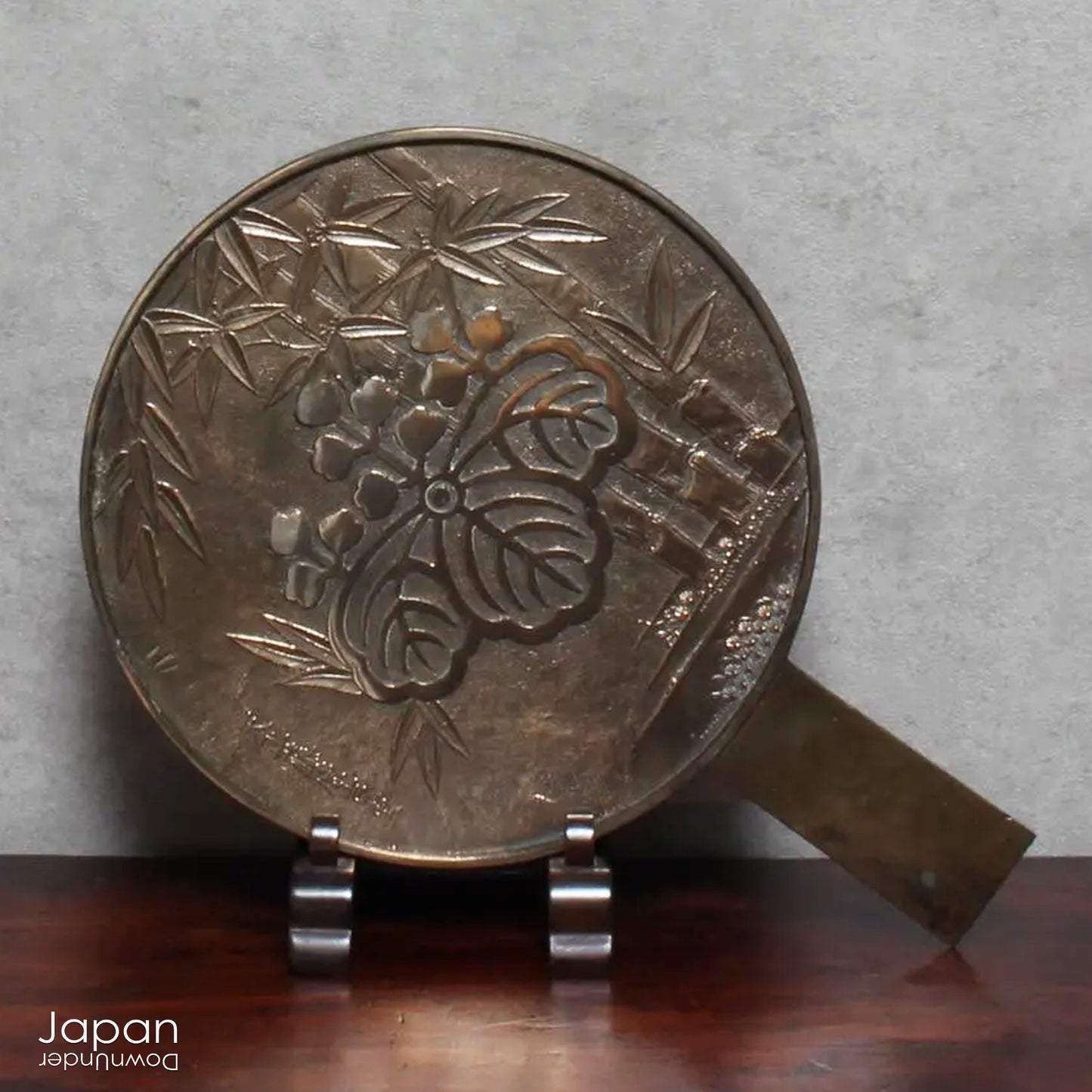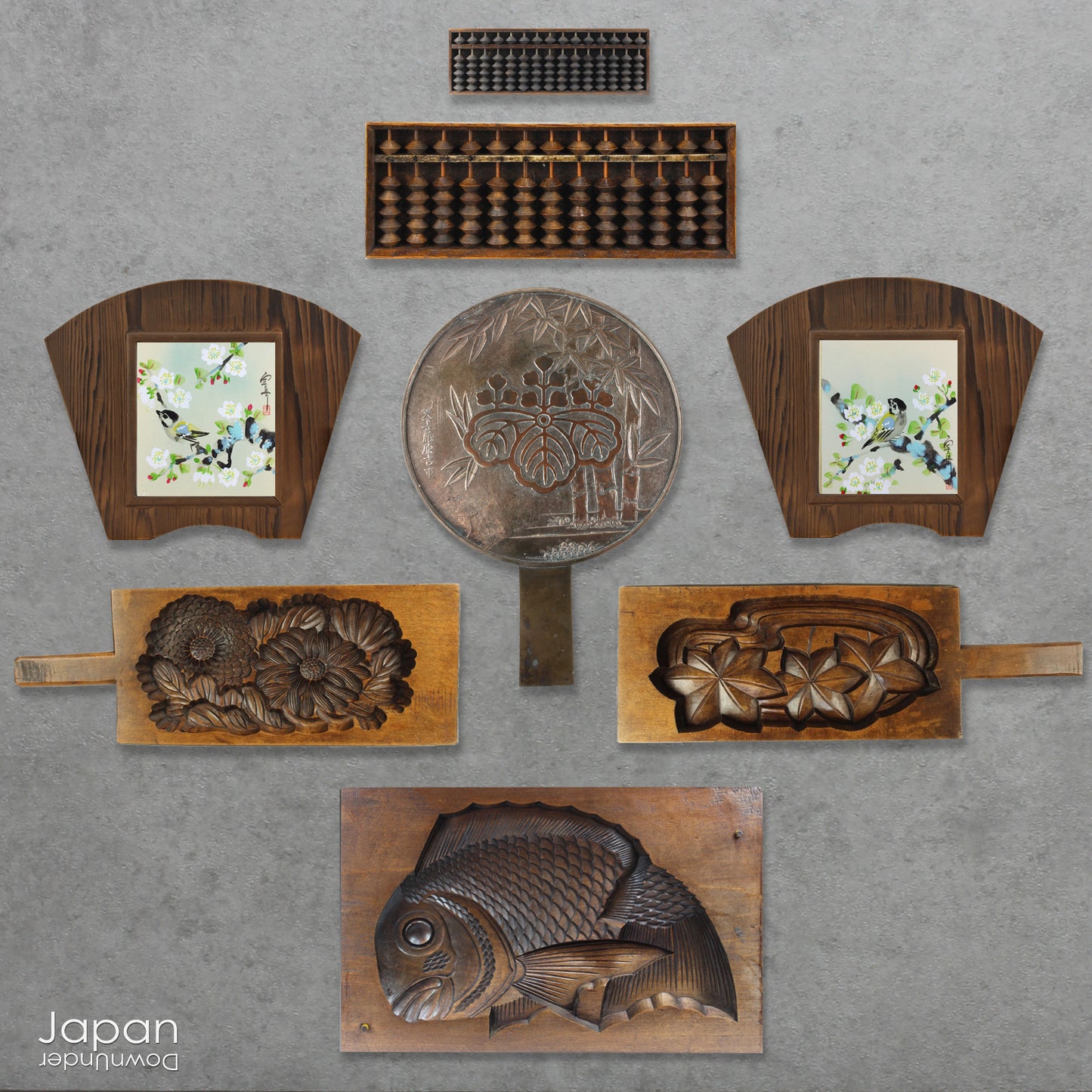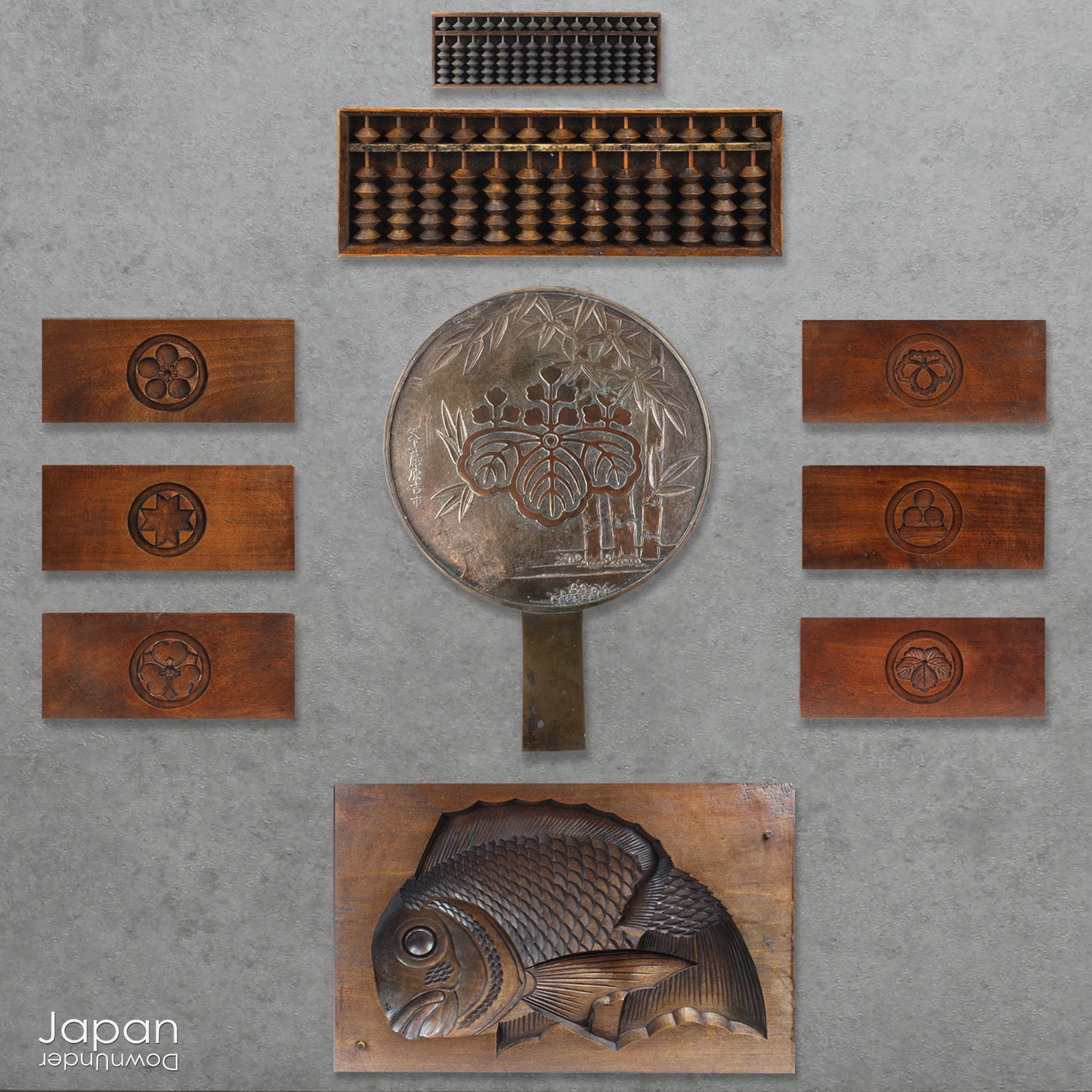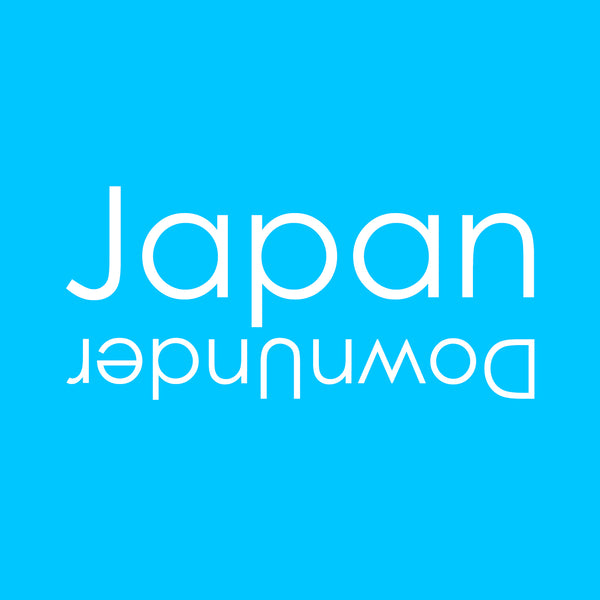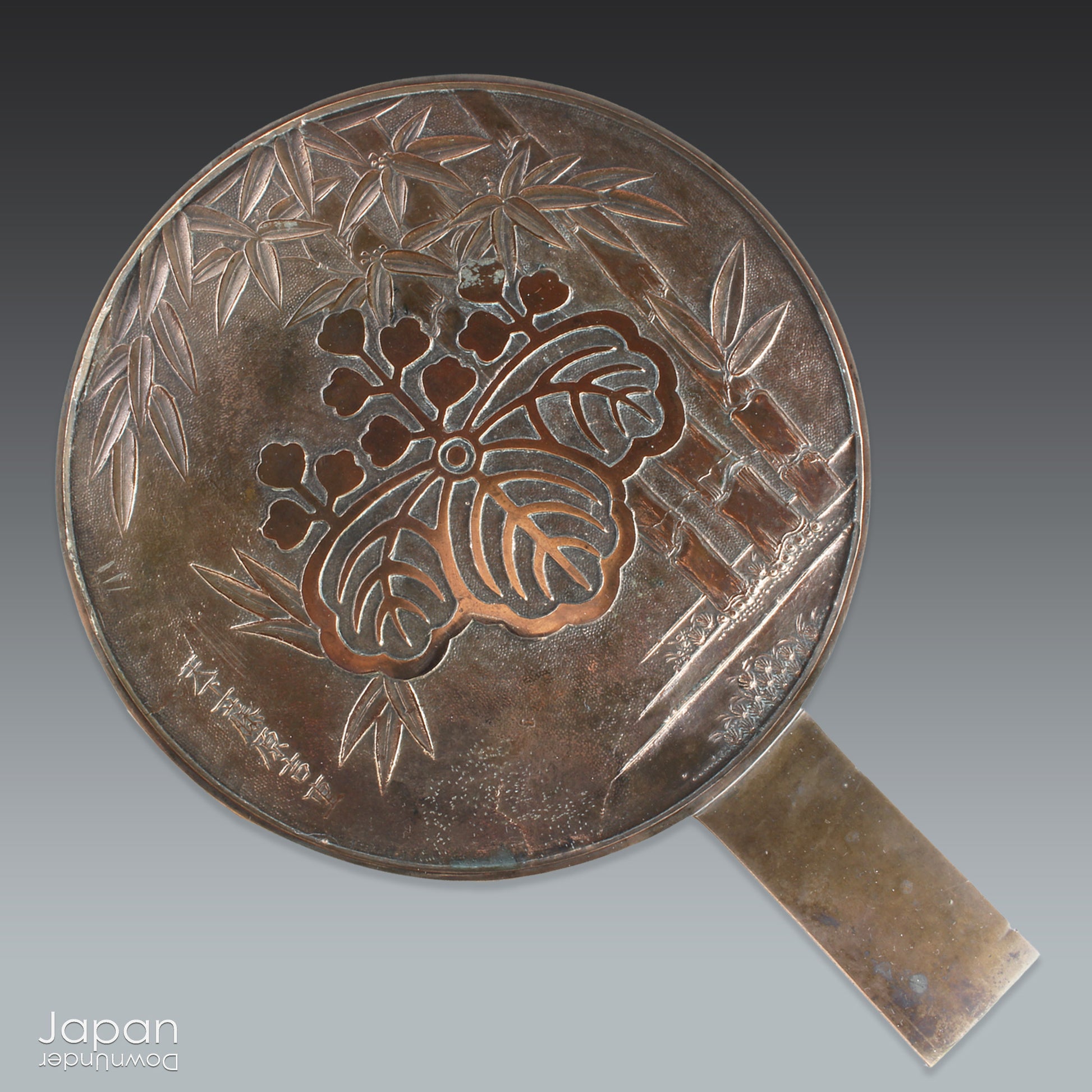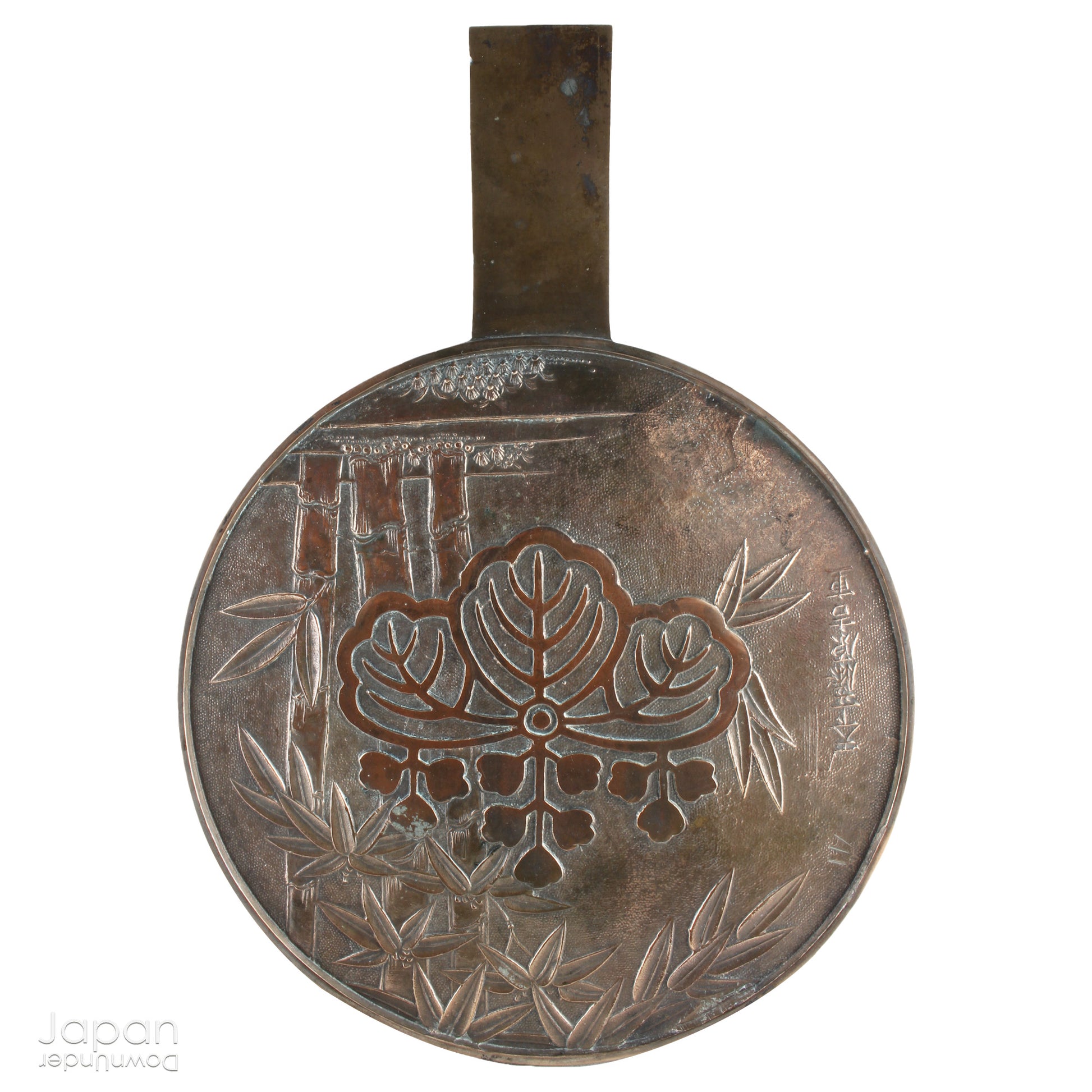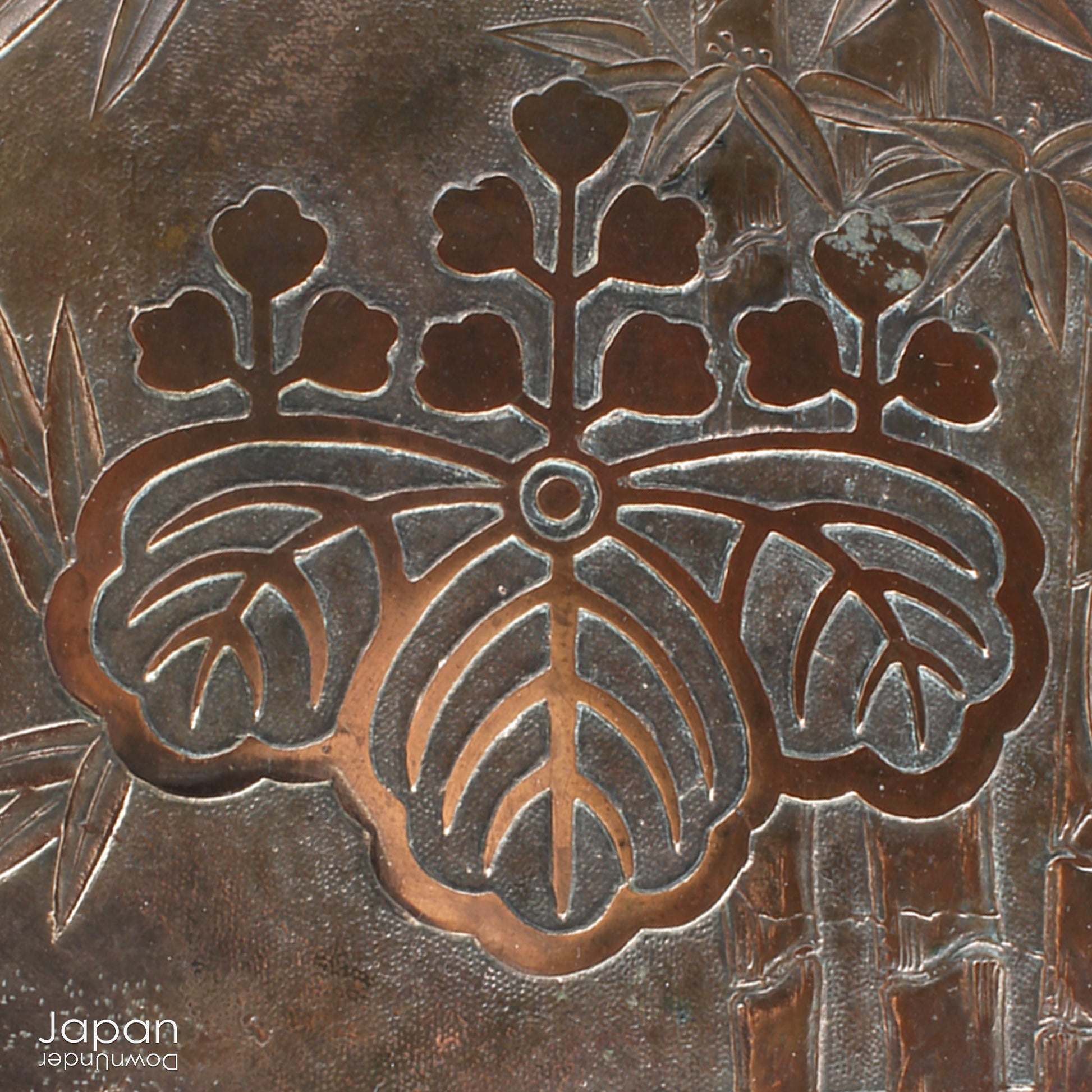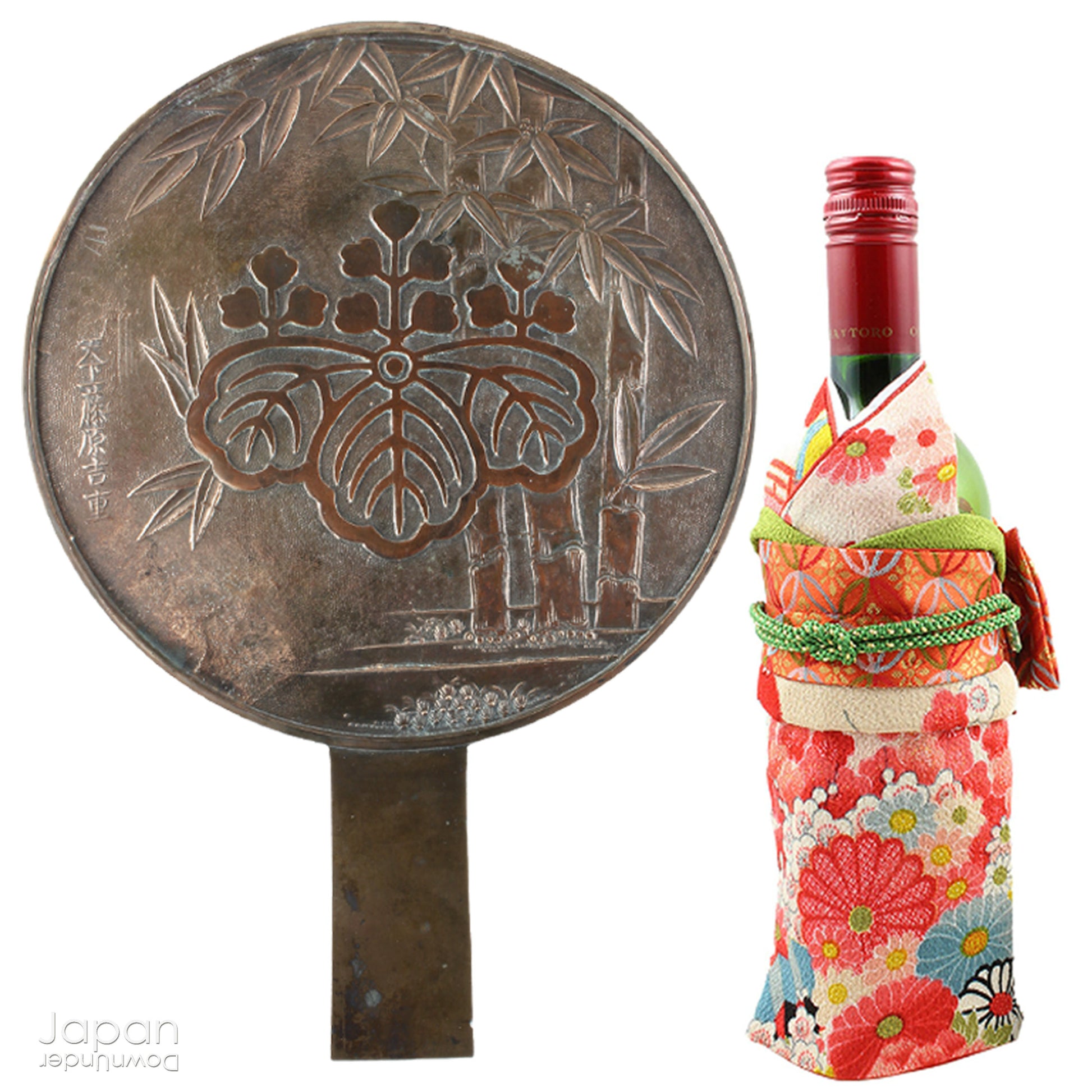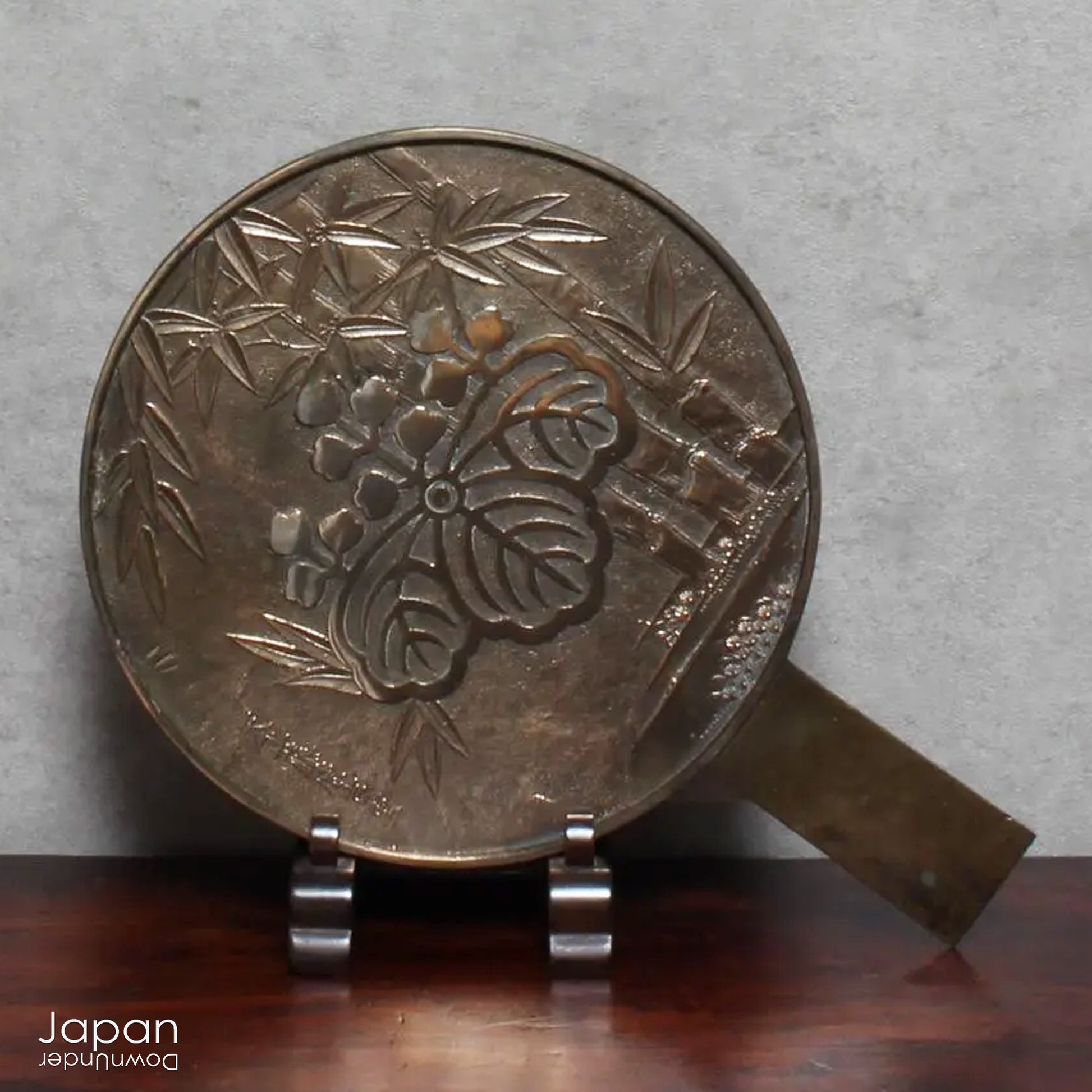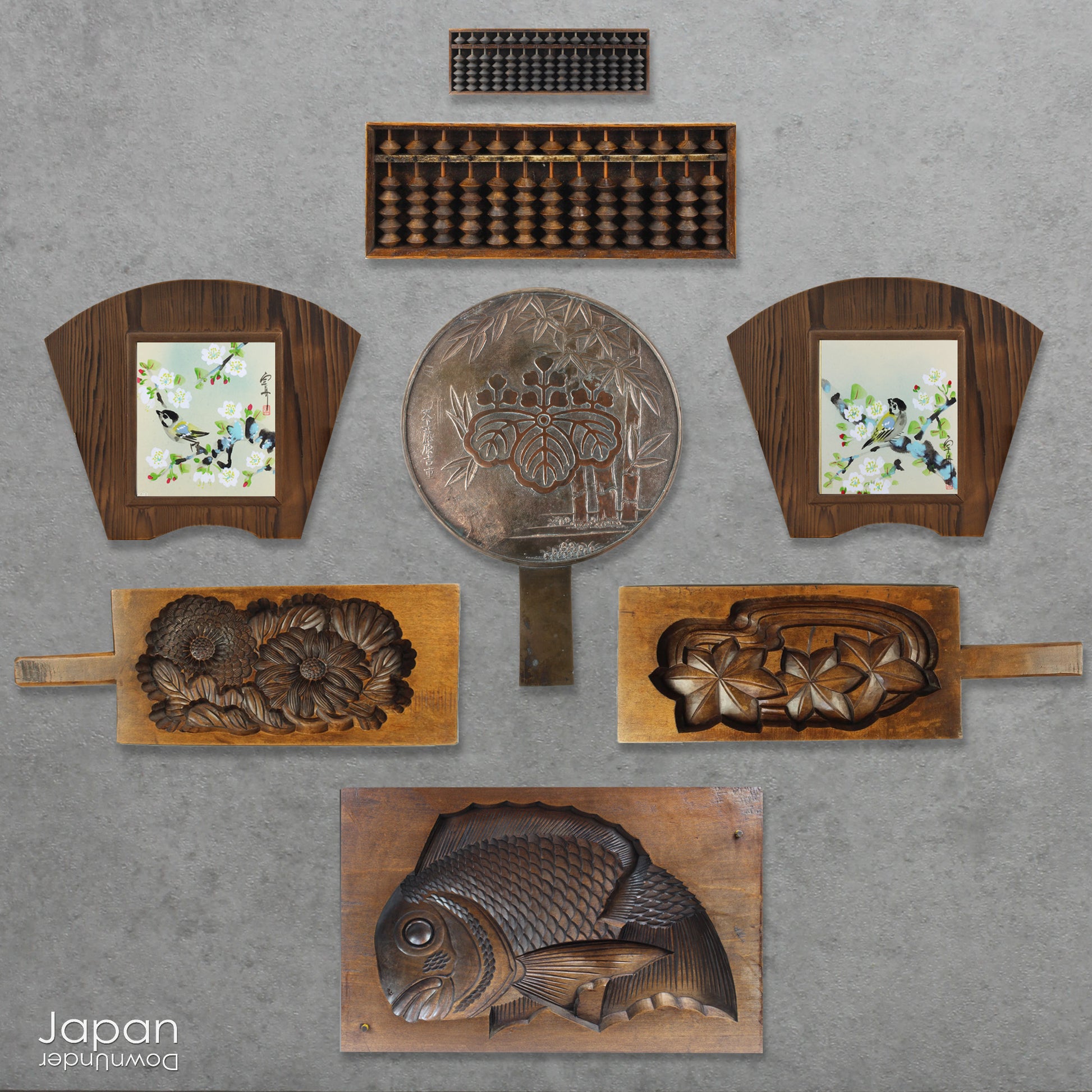JapanDownUnder
antique japanese bronze hand mirror - intricate metal work, gorgeous display piece
antique japanese bronze hand mirror - intricate metal work, gorgeous display piece
Couldn't load pickup availability
Love Japanese Style like We Do
Step into the world of Japanese craftsmanship with this stunning antique bronze mirror from the early 1900s. A captivating blend of history and artistry, it features intricate metalwork that elevates it from a mere functional piece to a cherished decorative treasure. Whether you are a seasoned collector or a connoisseur of vintage beauty, this mirror will add a unique charm to any space.
Mirrors have long played a pivotal role in Japanese culture, far beyond their utilitarian use. They were symbols of beauty and status, often seen in Edo-period woodblock prints of courtesans and noble women. Richly decorated with nature motifs and engimono—lucky symbols—these mirrors were once treasured items. Bronze mirrors like this were widely used up until the early 1900s, before the rise of European-style glass mirrors in Japan.
This mirror features a delicate bamboo motif encircling a gosan kiri (Paulownia) family crest. Revered in Japanese culture, the Paulownia tree was considered sacred, a perch for the divine phoenix. The gosan kiri crest is associated with nobility and power, traditionally worn by samurai families and even granted by the Emperor to distinguished lords such as Takauji Ashikaga and Hideyoshi Toyotomi. Bamboo, on the other hand, symbolizes strength and prosperity in Japan, making this mirror not just a decorative piece but a symbol of enduring resilience.
The level of craftsmanship that went into creating this mirror is truly remarkable. The mirror’s sand mold alone would have taken up to four months to complete. The artisan’s signature, Tenkaichi Fujiwara Yoshinobu, graces the left side, marking the mirror as a work of rare beauty and historical value.
Given its age, the mirror is in excellent condition, though it bears some surface scratches and gentle tarnishing—characteristics that only add to its vintage allure. Notably, the bamboo strips around the handle are absent, a common feature for mirrors of this period.
This mirror is a stunning statement piece that works beautifully in any home. Display it as a focal point on a wall, place it on a vanity or dresser with a decorative tray, incorporate it into a curated gallery wall, or showcase it within a glass-fronted cabinet. It is not just a mirror, but a piece of history—a lovely reminder of days gone by, offering both beauty and cultural significance.
- mirror measures around 24 cm (9.4”) in diameter and 33 cm (13”) long to the handle.
- weighs 920 gm.
(listing for mirror only)
SHIPPING INFORMATION
- please read our shipping notes in shipping policy.
- we use recycle packaging wherever possible and wrap for safety, rather than appearance!
ABOUT OUR VINTAGE AND ANTIQUE ITEMS
We list pieces we feel are worthy of display. There may be scratches, dents, fading and signs of wear and tear. We try to explain the condition of each item exactly, but may miss something.
Information regarding the item and it’s age is obtained from dealers and our personal research. We do our best to give you the correct information but please be aware that we cannot guarantee this information.
Please message us prior to purchase with any questions you may have about our products.
BRONZE MIRRORS
Bronze mirrors were introduced into Japan from China and Korea during the Yayoi period (about 300 BC - AD 300). At first they had a religious function and were revered as sacred objects representing the gods.
The Japanese soon learnt to make their own mirrors using the lost-wax technique, decorating them with Chinese or native Japanese designs.
By the Nara period (AD 710 -794) mirrors were being made for everyday use, with the increasing use of Japanese designs, such as native plants and animals symbolizing good fortune. From the Kamakura period (1185-1333) a design showing Hôraizan (the Chinese 'Island of Immortality') became popular.
Mirrors gradually became more robust. They mostly had a central knob, often in the shape of a tortoise, which was pierced with a hole through which a cord was strung for holding.
The first handled mirrors appeared in the Muromachi period (1333-1568). During the Edo period (1600-1868), mirrors decorated with lucky symbols or Chinese characters were given at weddings. Mirrors became larger as hairstyles became more ornate; some mirrors in Kabuki theatre dressing-rooms were up to fifty centimeters across and were placed on stands.
The faces of mirrors were highly polished or burnished, with itinerant tanners and polishers specializing in this work. Since the mirror, together with the sword and the jewel, were symbols of Imperial power, mirror-makers were deeply revered and often given honorary titles such as Tenka-Ichi ('First under Heaven'). However, this title was often misused and was officially prohibited in 1682.
Bronze mirrors were replaced by glass mirrors after the Meiji Restoration (1868).
KIRI MON
Mon are Japanese emblems or crests used to decorate and identify an individual, a family, an institution or business entity.
Kiri mon is based on the kiri or paulownia tree. Since it was used on Japanese money such as the koban (old Japanese oval gold coins) after the Muromachi period, it became widely recognized by the nation as the mon representing the Japanese government.
The basic design consists of three erect flower stalks with leaves. It was originally the family crest exclusively for the Imperial family but was later used by non-Imperial family too. The design with three, five and three flowers is the most common and called gosan kiri. There are more than 140 kinds of kiri-mon.
Kiri mon gradually came to be used by a wide range of people including common people, samurai (warriors), and daimyo (feudal lords). Gosan kiri was widely used by common people, which made the lending and borrowing of formal kimono with family crests possible!
In the past Paulownia was seen as a god-like tree on which the sacred phoenix perched. In Japan it had been used for embroidery and shape resist dyeing on the Emperors' clothes. It was thought to be the family crest with the highest social status after 'Kikuka-monsho' since the time of Emperor Saga. After the Middle Ages, it was the family crest that samurai families desired, and Takauji Ashikaga and Hideyoshi Toyotomi (famous feudal lords) received it from the Emperors.
In 1872, the Meiji Government ruled that imperial appointees had to have the goshichi no kiri mon on their jackets. It is the conventional mon for Japanese Government, and is treated in the same manner as the national emblem. It is used for the design of Orders of the Rising Sun, the decoration of documentations such as visas and passports, supplies in the official residence of the prime minister, and the plate mounted on the podium for the Prime Minister.
Share
